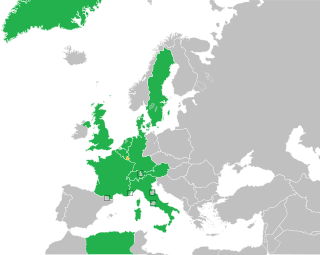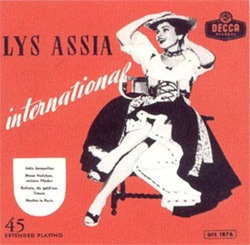
The Eurovision Song Contest 1959 was the fourth edition of the Eurovision Song Contest. It took place in Cannes, France, following the country's victory at the 1958 contest with the song "Dors, mon amour" by André Claveau. It was the first time France hosted the event. The contest was held at Palais des Festivals et des Congrès on Wednesday 11 March 1959, and was hosted by Jacqueline Joubert. It was the first Eurovision Song Contest held in a coastal town and in the Mediterranean Basin.

"Refrain" was the winning song of the Eurovision Song Contest 1956, co-written by Émile Gardaz and Géo Voumard, performed by Lys Assia representing Switzerland. It was the first-ever winner of the Contest, but not the first-ever performance by Switzerland. This apparent anomaly is due to the rules of the 1956 Contest allowing each competing country to be represented by two songs. Assia represented Switzerland singing both songs, and had previously performed "Das alte Karussell" in German.

"Dors, mon amour" was the winning song in the Eurovision Song Contest 1958. Performed in French by André Claveau representing France, the song was the first entry sung by a male soloist to win the contest.

"Mon amour pour toi" was the Belgian entry in the Eurovision Song Contest 1960, performed in French by Fud Leclerc.
Danièle Dupré was a French singer from the 1950s, most notable for representing Luxembourg in the 1957 Eurovision Song Contest with her song Amours mortes – Faded Love – where she finished in a tie for fourth.

"Hengaillaan" was the Finnish entry in the Eurovision Song Contest 1984, performed in Finnish by Kirka.

"La belle amour" was the French entry in the Eurovision Song Contest 1957, performed in French by Paule Desjardins.

"On aura le ciel" was the French entry in the Eurovision Song Contest 2000, performed in French by Sofia Mestari.

"Emis forame to himona anixiatika" was the Greek entry in the Eurovision Song Contest 1996, composed by Kostas Bigalis and performed in Greek by Mariana Efstratiou. Efstratiou had previously represented Greece in the 1989 contest in Lausanne with "To diko sou asteri" and Bigalis in turn in Dublin in 1994 with "To Trehandiri".
"Mon ami Pierrot" was Monaco's entry in the Eurovision Song Contest 1959, performed in French by the French singer Jacques Pills. This was Monaco's first entry in the contest.

"Heel de wereld" was the Dutch entry in the Eurovision Song Contest 1958, performed in Dutch by Corry Brokken. This was Brokken's third consecutive appearance on the Eurovision stage and it would be her last as a performer.

"A festa da vida" was the Portuguese entry in the Eurovision Song Contest 1972, performed in Portuguese by Carlos Mendes.
Switzerland entered the Eurovision Song Contest 2002 with Francine Jordi and the song "Dans le jardin de mon âme". They were returning to the contest after being relegated from the 2001 contest after Jane Bogaert with "La vita cos'e" came 20th.

"La vita cos'è?" was the Swiss entry for the Eurovision Song Contest 2000. The ballad, which featured a climactic chorus, was performed by Jane Bogaert, who wore a sleeveless lilac gown for her performance. One of the black-clad backing singers who accompanied her was Al Bano, who had previously represented Italy in the 1976 and 1985 contests with Romina Power, singing "We'll Live It All Again" and "Magic Oh Magic" respectively. "La vita cos'è?" was composed by Bernie Staub, with lyrics by Thomas Marin.

"Never Let It Go" was the Swedish entry for the Eurovision Song Contest 2002. It was performed as a cheery number about a woman dancing the night away with the man she loves.

"Sto pregando" was the Swiss entry to the Eurovision Song Contest 1994, held in Dublin, Ireland.

"Mon cœur l'aime" was the Swiss entry to the Eurovision Song Contest 1996, sung in French by Kathy Leander. It was written and composed by Soren Mounir.

"Les illusions de nos vingt ans" is a French-language song by Peter, Sue and Marc that represented Switzerland at the Eurovision Song Contest 1971 in Dublin, Ireland. It was composed by Peter Reber and written by Maurice Tézé.
Véronique Müller is a Swiss singer.

"C'est la chanson de mon amour" was the Swiss entry in the Eurovision Song Contest 1972, performed in French by Véronique Müller.
This page is based on this
Wikipedia article Text is available under the
CC BY-SA 4.0 license; additional terms may apply.
Images, videos and audio are available under their respective licenses.
















